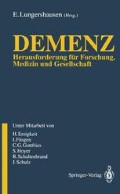Zusammenfassung
Sehr wahrscheinlich spielt Adenosin in verschiedenen Geweben einschließlich des Zentralnervensystems eine Rolle als autokriner/parakriner Regulator. Dies ist in Abb. 1 schematisch dargestellt. Adenosinspiegel im Gewebe steigen nach Hypoxie und/oder Ischämie an, ebenso nach langfristiger Aktivierung eines Nervs. Adenosin stammt entweder aus den Nervenzellen selbst oder wird während der Aktivität des Nervs von Effektorzellen abgegeben. Es wurde wiederholt festgestellt, daß es eher post- als präsynaptisch produziert wird [la, 2]. Es wird nicht aus Speichern abgerufen, sondern bei Bedarf freigesetzt. Eine mögliche Quelle ist das von Nerven- oder Effektorzellen während der Transmission ausgeschüttete ATP. Dies wurde wiederholt von Burnstock [1] postuliert, und es dürften kaum Zweifel daran bestehen, daß ATP zumindest in der Peripherie als wichtiger Botenstoff an der Neurotransmission beteiligt ist.
Ich danke Dres’. Marianne Dunér-Engström, Ping-Sheng Hu, Ingeborg van der Ploeg, Johan Fastbom, Thomas Dunwiddie, Fiona Parkinson, Herrn Sten Ågren sowie Frau Agneta Wallman für ihre Unterstützung. Die Untersuchungen wurden durch Forschungsbeihilfen der Loo and Hans Ostermans Foundation, der 1987 Foundation for Stroke Research des Swedish Medical Research Council, des Karolinksa Institut unterstützt.
Übersetzung: Birgit Lamerz-Beckschäfer.
Access this chapter
Tax calculation will be finalised at checkout
Purchases are for personal use only
Preview
Unable to display preview. Download preview PDF.
Literatur
Burnstock G (1990) Overview. Purinergic mechanisms. Ann NY Acad Sci 603:1–17
Fredholm BB (1976) Release of adenosine-like material from isolated perfused dog adipose tissue following sympathetic nerve stimulation and its inhibition by adrenergic alpha-receptor blockade. Acta Physiol Scand 96:122–130
Jonzon B, Fredholm BB (1985) Relase of purines, noradrenaline, and GABA from rat hippocampal slices by field stimulation. J Neurochem 44:217–224
Fredholm BB, Hedqvist P, Lindström K, Wennmalm M (1982) Release of nucleosides and nucleotides from the rabbit heart by sympathetic nerve stimulation. Acta Physiol Scand 116:285–295
Fredholm BB (1982) Adenosine receptors. Med Biol 60:289–293
Fredholm BB, Jonzon B (1988) Adenosine receptors: Agonists and antagonists. In: Stefanovich V, Okyayuz-Baklouti I (eds) Adenosine in cerebral metabolism and blood flow. VSP, Utrecht, p 17
Fredholm BB (1982) Adenosine actions and adenosine receptors after 1 week treatment with caffeine. Acta Physiol Scand 115:283–286
Fastbom J, Fredholm BB (1990) Effects of long-term theophylline treatment on adenosine A1-receptors in rat brain: autoradiographic evidence for increased receptor number andaltered coupling to G-proteins. Brain Res 507:195–199
Fredholm BB, Hedqvist P (1980) Modulation of neurotransmission by purine nucleotides and nucleosides. Biochem Pharmacol 29:1635–1643
Fredholm BB, Dunwiddie TV (1988) How does adenosine inhibit transmitter release? Trends Pharmacol Sci 9:130–134
Fredholm BB, Jonzon B, Lindgren E, Lindström K (1982) Adenosine receptors mediating cyclic AMP production in the rat hippocampus. J Neurochem 39:165–175
Dunwiddie TV, Fredholm BB (1989) Adenosine A1 receptors inhibit adenylate cyclase activity and neurotransmitter release and hyperpolarize pyramidal neurons in rat hippocampus. J Pharmacol Exp Ther 249:31–37
Fredholm BB, Jonzon B, Lindström K (1986) Effect of adenosine receptor agonists and other compounds on cyclic AMP accumulation in forskolin-treated hippocampal slices. Naunyn Schmiedebergs Arch Pharmacol 332:173–178
Fredholm BB, Sollevi A (1986) Cardiovascular effects of adenosine. Clin Physiol 6:1–21
Edvinsson L, Fredholm BB (1983) Characterization of adenosine receptors in isolated cerebral arteries of cat. Br J Pharmacol 80:631–637
Fredholm BB, Sandberg G (1983) Inhibition by xanthine derivatives of adenosine receptor-stimulated cyclic adenosine 3′,5′-monophosphate accumulation in rat and guinea-pig thymocytes. Br J Pharmacol 80:639–644
Söderbäck U, Sollevi A, Fredholm BB (1987) The disappearance of adenosine from blood and platelet suspension in relation to the platelet cyclic AMP content. Acta Physiol Scand 129:189–194
Zetterström T, Vernet L, Ungerstedt U, Tossmann U, Jonzon B, Fredholm BB (1982) Purine levels in the intact rat brain. Studies with an implanted perfused hollow fibre. Neurosci Lett 29:111–115
Dux E, Fastbom J, Ungerstedt U, Rudolphi K, Fredholm BB (1990) Protective effect of adenosine and a novel xanthine derivative propentophylline on the cell damage after bilateral carotid occlusion in the gerbil hippocampus. Brain Res 516:248–256
Andiné P, Rudolphi KA, Fredholm BB, Hagberg H (1990) Effect of propentofylline (HWA 285) on extracellular purines and excitatory amino acids in CA1 of rat hippocampus during transient ischemia. Br J Pharmacol 100:814–818
Evans MC, Swan JH, Meldrum BS (1987) An adenosine analogue, 2-chloroadenosine, protects against long term development of ischemic cell loss in the rat hippocampus. Neurosci Lett 83:287–292
Lubitz DKAJ von, Dambrosia JM, Klempski O, Redmond DJ (1988) Cyclohexyl adenosine protects against neuronal death following ischemia in the CA1 region of gerbil hippocampus. Stroke 19:1133–1139
Rudolphi KA, Keil M, Hinze H-J (1987) Effect of theophylline on ischemically induced hippocampal damage in mongolian gerbils: A behavioural and histopathological study. J Cereb Blood Flow Metab 7:74–81
Jonzon B, Bergquist A, Li YO, Fredholm BB (1986) Effects of adenosine and two stable adenosine analogues on blood pressure, heart rate and colonic temperature in the rat. Acta Physiol Scand 126:491–498
Rudolphi KA, Keil M, Fastbom J, Fredholm BB (1989) Ischemic damage in gerbil hippocampus is reduced following upregulation of adenosine (A1) receptors by caffeine treatment. Neurosci Lett 103:275–280
Fredholm BB, Lindgren E, Lindström K, Vernet L (1983) The effect of some drugs with purported antianoxic effect on veratridine-induced purine release from isolated rat hypothalamic synaptosomes. Acta Pharmacol Toxicol 53:236–244
Editor information
Editors and Affiliations
Rights and permissions
Copyright information
© 1992 Springer-Verlag Berlin Heidelberg
About this paper
Cite this paper
Fredholm, B.B. (1992). Wirkmechanismus von Adenosin und Vinpocetin. In: Lungershausen, E. (eds) Demenz. Springer, Berlin, Heidelberg. https://doi.org/10.1007/978-3-642-76932-0_13
Download citation
DOI: https://doi.org/10.1007/978-3-642-76932-0_13
Publisher Name: Springer, Berlin, Heidelberg
Print ISBN: 978-3-642-76933-7
Online ISBN: 978-3-642-76932-0
eBook Packages: Springer Book Archive

